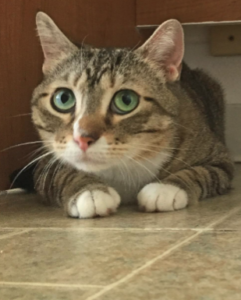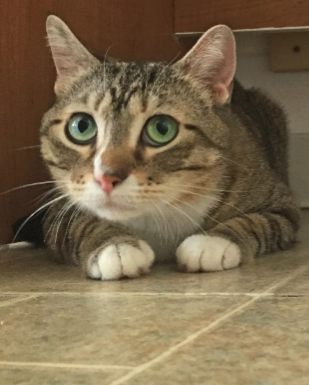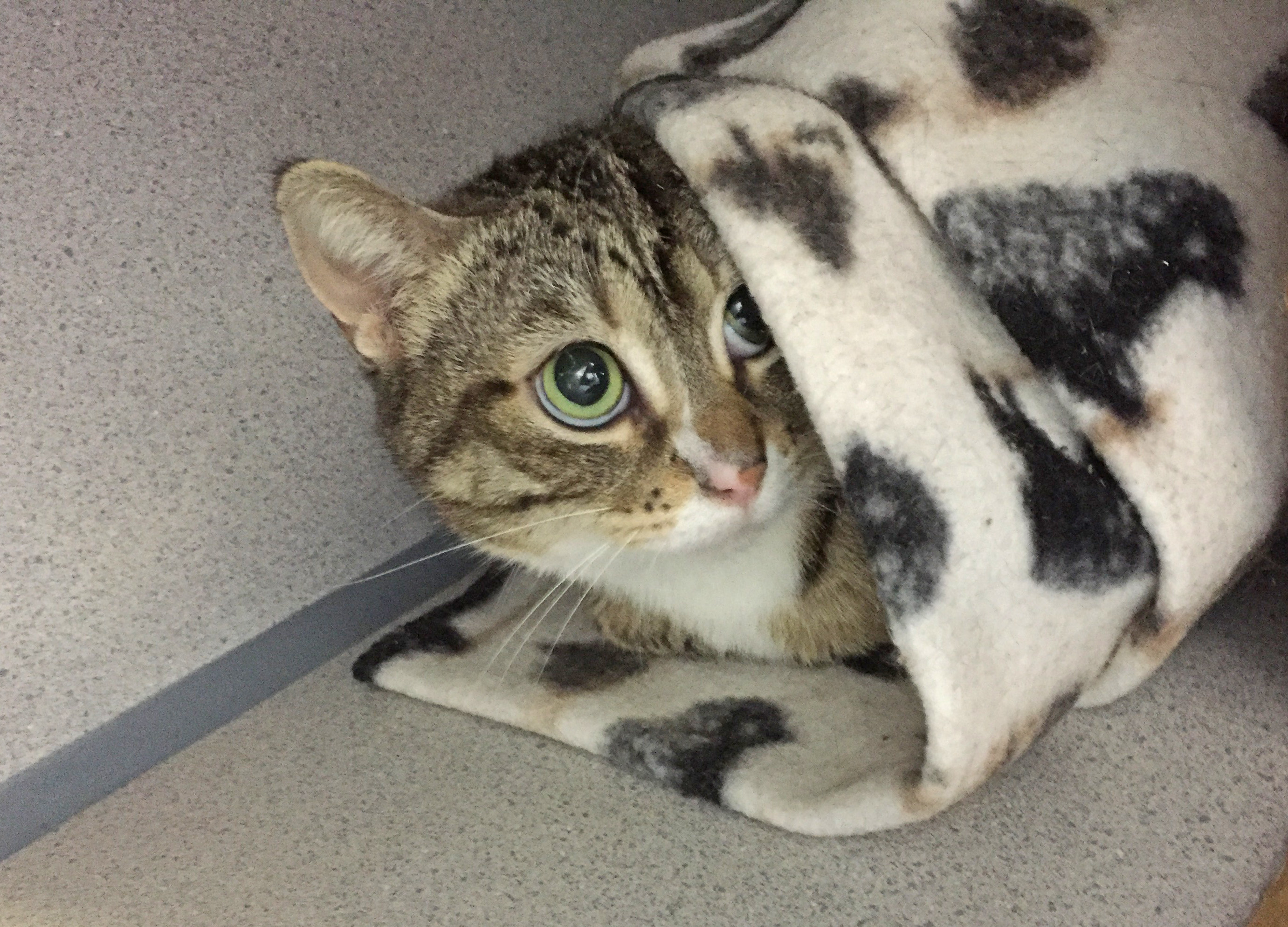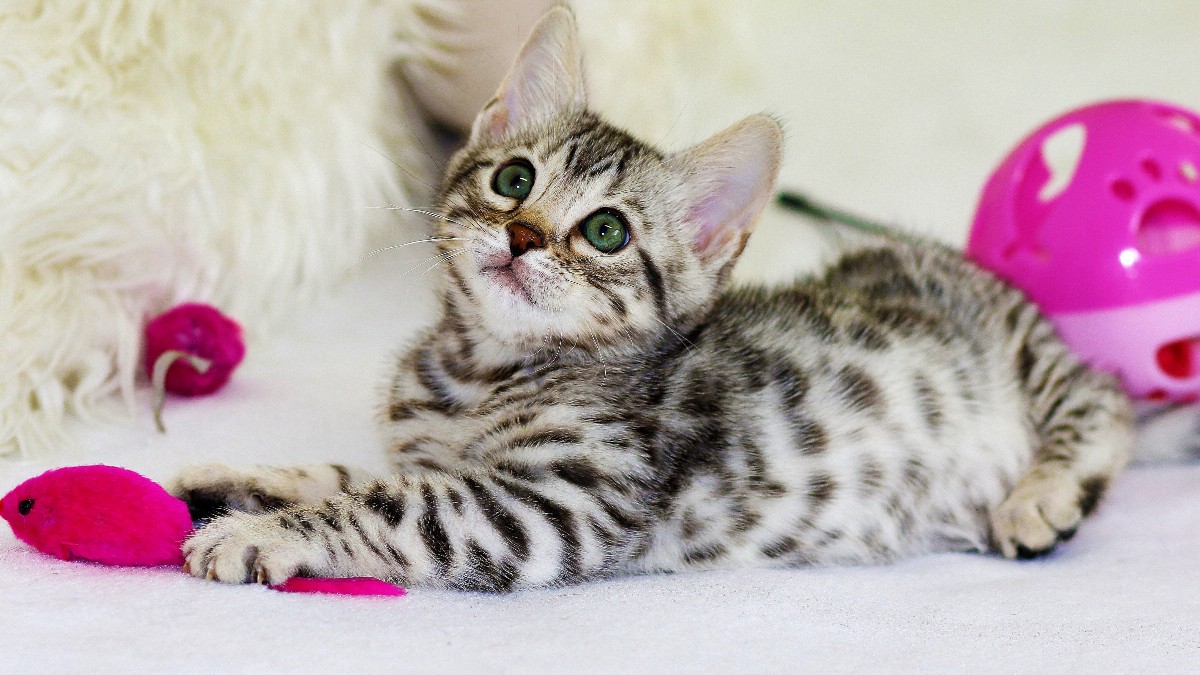Cats in the Basement: Let’s Help Them Venture Forth! (Part 2)
by Cheryl Kolus, DVM, KPA-CTP
In the last article, we looked at why some cats are fearful, the body language of fear, levels of fear and the effects of fear. Now that you have a better understanding of your fearful cat, let’s get to what you really want to know: How can you help your cat be less fearful?
Rule out medical concerns
It’s always a good idea to first have a veterinary exam performed on Kitty to rule out any medical problems that might contribute to his fearful behavior. This is especially true if this behavior is new. Pain, discomfort or chronic illness can make anyone want to hide away from the world.
Hiding
Having a place to hide is very important for any cat and especially so for fearful cats. They must have a place they can feel protected and safe. However, ideally this will be a place that you can access so you can work on the behavior modification techniques we’re going to discuss. So if possible, provide hiding places like a cardboard box or closet where you can observe each other from a distance during training sessions.

Big–picture stuff
Overall, we know that fear can be caused by a perceived lack of control of the cat’s situation, novelty, unpredictability, and social conflicts with people or other animals. Think about your cat’s situation; can you determine which of these might be the culprit? More than one category might apply. And remember, you have to put yourself in your cat’s paws. You might know your dog isn’t interested in your cat, but from your cat’s point of view, seeing those big, furry paws walking around the bed while she’s hiding under it can be fear-inducing indeed!
Or perhaps it’s not so obvious. Maybe your cat is somewhat curious about what’s going on downstairs, but the TV is on and your family is moving around laughing and talking—ARRGGHH! Too much activity for Miss Timid to explore with any confidence. If only she could watch the scene from a safe spot up above.
So what can we do?
1. Offer the cat more control over its environment by providing choices and environmental enrichment.
2. Reduce unpredictability by establishing a set routine for interactions.
3. Reduce novelty by giving him a safe space to retreat to if desired and making household changes gradually.
4. Reduce social conflict by setting up gradual introductions with other pets and going at your cat’s pace when interacting with him yourself.
Let’s take a closer look at each of those recommendations.
Offer the cat more control over its environment by providing choices and environmental enrichment.
Studies in monkeys and rats have shown that providing some control over their laboratory environment (where they controlled lighting and/or the delivery of food and water) decreased emotionality and fearful behaviors. Providing enrichment (i.e., manipulating the environment or offering social interactions that allow the cat to engage in natural behaviors) can help provide control. However, depending on the cat’s level of fear and its triggers, certain types of enrichment are likely to be more helpful than others.
For instance, Miss Timid might appreciate high perches from where she can view the family’s activity and still feel safe. Wall shelves or a cat tree might be helpful. This can also help for cats afraid of other pets in the home, particularly dogs who can’t climb up after them. Other cats prefer to hide out at floor level, so arranging furniture or providing simple cardboard boxes as hiding places might be preferred as a way to feel safe.
Other enrichment ideas include providing toys for self-play, routine playtime with a person, companionship with another pet the cat is friendly with, window views or safe outdoor access, offering scents to explore (catnip, silver vine, prey scents), auditory stimulation (nature sounds or cat-specific music), clicker training, and foraging for food. It’s important that when adding enrichment of any kind you monitor the cat to see if the enrichment is having a positive effect. For instance, if a cat is already not eating well, making it harder to find food might not be a good idea. Or if waving a feather toy near his face is causing him to hiss and back up, that kind of toy play is not helpful right now.
Reduce unpredictability by establishing a set routine for interactions.
As much as possible, keep daily life for your fearful cat predictable. Feeding happens at 7am, 1pm and 7pm (maybe with the help of an automatic feeder). Play time with you happens every morning and clicker training every evening before feeding. Kitty gets access to that prime sunny spot every afternoon. Her litterboxes are kept in the same safe location and cleaned every day. Time out of her safe room (if needed) happens every night at bedtime. This isn’t always easy, but see what you can do. As Kitty becomes more confident, you can incorporate gradual changes to help her be more flexible.
Reduce novelty by giving him a safe space to retreat to if desired and making household changes gradually.
This is related to being predictable but goes further. Fearful cats are often wary of new people, new pets, new furniture, new noises, etc. There is absolutely nothing wrong (and often everything right) with confining Mr. Trembles in one room in the back of the house during your Halloween party! If your cat is very fearful and you get a new couch, you might actually have to work on getting him used to it by placing treats all around it. He might not be ready to meet even your cat-whispering friend, so don’t force it by carrying him downstairs and holding your squirming cat while your friend strokes and drools over him.
Reduce social conflict by setting up gradual introductions with other pets and going at your cat’s pace when interacting with him yourself.
I don’t have the space here to go over how to properly introduce pets, but slow and steady wins the race, with the overall goal of having the sight, scent and sound of one pet predicting something wonderful for the other pet. Also important is making sure there are plenty of resources (food, water, resting spots, perches, litterboxes, toys) to go around so each pet has easy access to them at any time. Keeping pets separated when not supervised avoids negative interactions that can exacerbate fear.
Sometimes, as much as we hate to admit it, we are the ones scaring the cat. In this case, it’s important to consider our own body language and make sure we present ourselves as unthreatening as possible. This means approaching the cat slowly and sideways, and avoiding leaning over her, reaching for her or directly staring at her. Instead kneel or sit on the floor a safe distance from Kitty while stealing sideways glances and blinking slowly at her. Talk softly or immerse yourself in a book and just read to her (that’s one way to avoid looking at her all the time!). Let her come to you if she wants, and depending on the situation, continue to ignore her or let her sniff your hand placed on the floor. Ideally, only if she rubs on your hand should you attempt gentle petting. This is a great way to build trust. However, in my experience, sometimes petting a cat who is not actively soliciting touch can still have positive consequences; this might be while they’re eating or resting. In this case, I always start by slowly placing my hand on the floor by their shoulder and if they’re okay with that, then I pet their shoulder with one finger. Depending on the cat’s reaction, I may continue petting the shoulder area with more fingers and then stroke along the back of the neck or the back. If the cat enjoys the interaction, she might stick her butt in the air, lean into petting or even start to purr, roll and stretch. Research has suggested that most cats prefer petting around the head, but having worked one-on-one with hundreds of shelter cats, I do find that some cats are more comfortable if you start petting around their shoulder or back. I’ve also noticed that using the back of your hand can be less threatening than your palm at first. See what works for your cat, but when in doubt, let her make the first move.
Triggers
It’s important to try to determine what triggers your cat’s fears. Certainly some cats are globally fearful in a home environment, meaning it seems that everything is a trigger! But others have very specific triggers, which makes it easier for us to manage the environment to prevent fear and work on specific behavior modification techniques to help Mr. Trembles overcome his fear of the trigger.
Some fear triggers we already mentioned are people, other pets, changes in routine or changes to the household environment. Other triggers might include noises, parts of the house or objects (I have heard of some cats being fearful of ceiling fans).
If you’re not sure, you might consider journaling, where you take detailed notes about situations in which your cat shows fearful behavior to try to determine patterns that at first might not be obvious. You could also try videoing when you’re not around to see what’s going on.
If you’re able to determine specific triggers for your cat’s fear, the next step is to do whatever you can to avoid them unless you’re actively working on behavior modification. Otherwise, fear might escalate, or at least it’s not likely to decrease unless Kitty habituates to the trigger (and if you’re reading this because you have a fearful cat, I’m guessing that’s unlikely to happen).
Reinforcers
Next, determine what’s reinforcing for your cat; i.e., what would increase the likelihood of your cat relaxing? This could be the usual suspects, like food, toys, petting or catnip, or it could be something less obvious (to us) like quiet or being left alone. Sometimes simply your presence or that of another preferred person is reinforcing. Sometimes regular kibble isn’t that reinforcing but canned food, baby food or tuna is. Perhaps Miss Timid finds another pet nearby reinforcing. If possible, try to think of multiple types of reinforcers to have in your toolbox as we move forward in helping your cat become more confident.
Coming up in Part 3 of this series, we’ll look at various behavior modification techniques along with adjunctive therapies that can help your fearful cat.









Comments are closed.